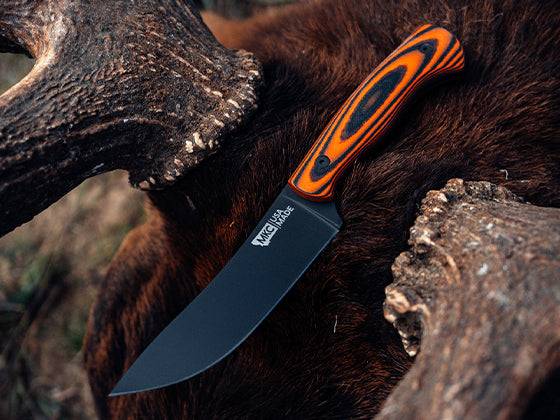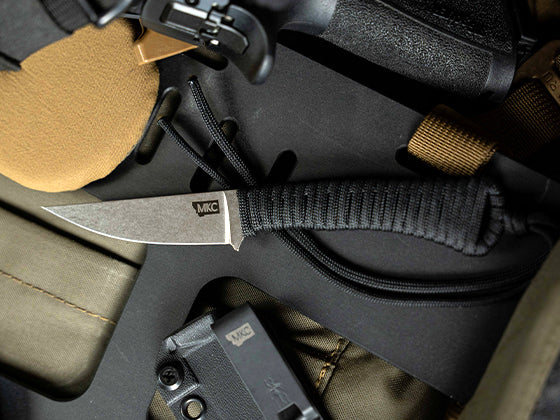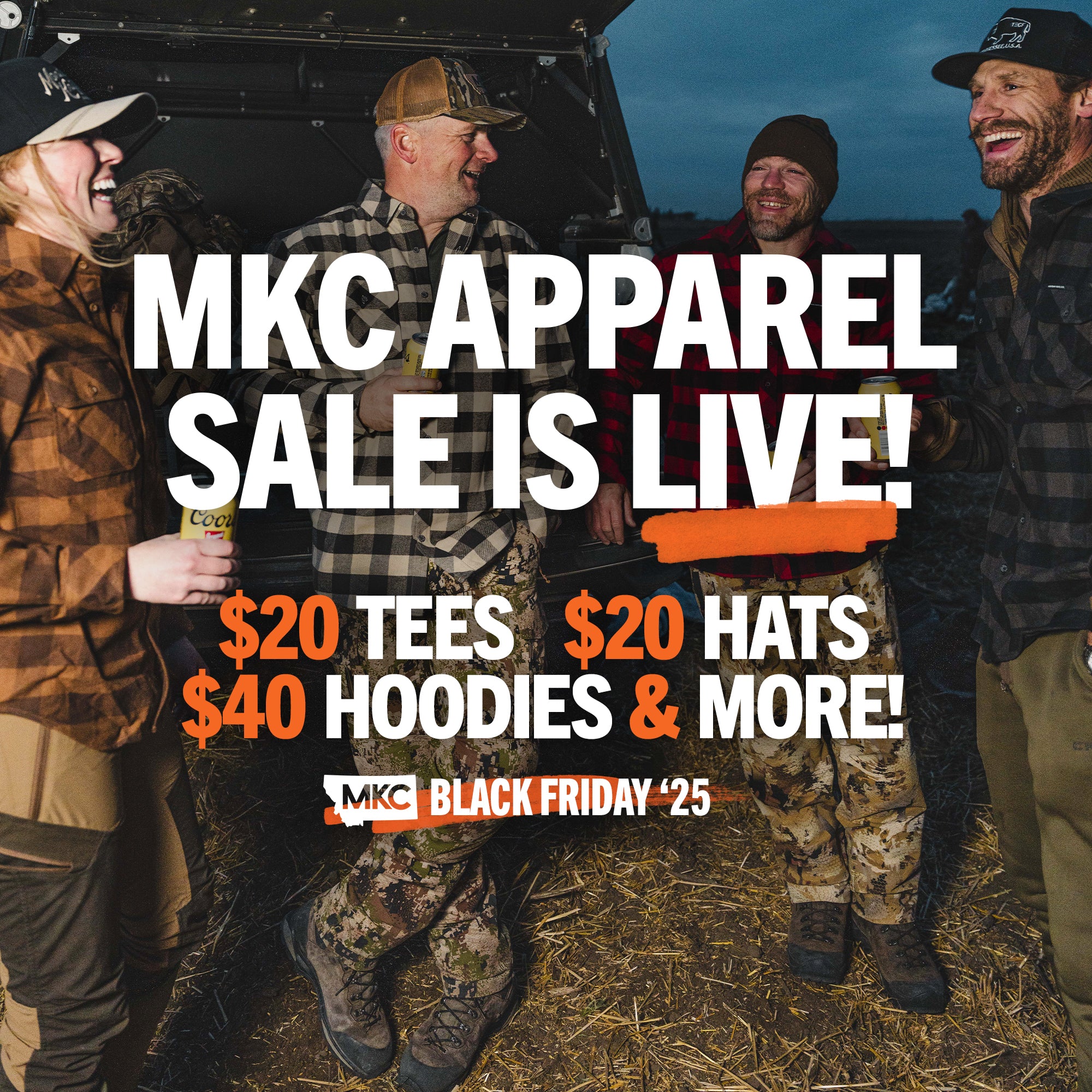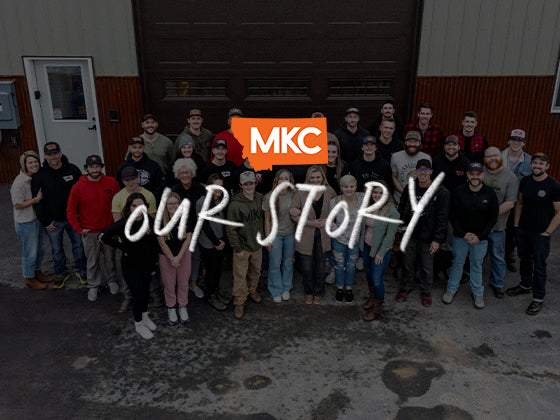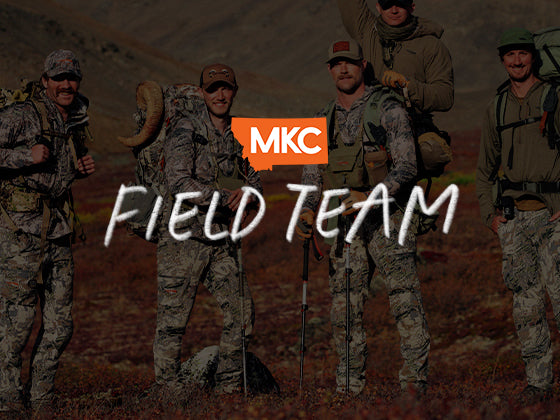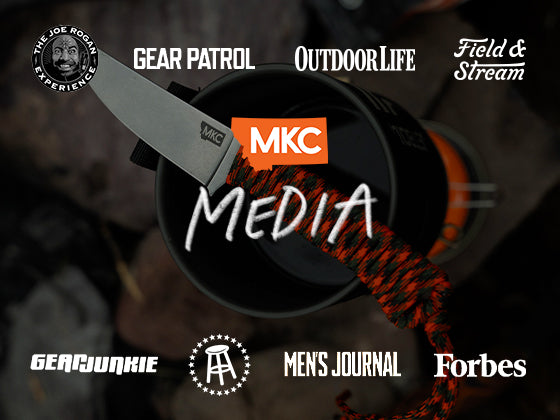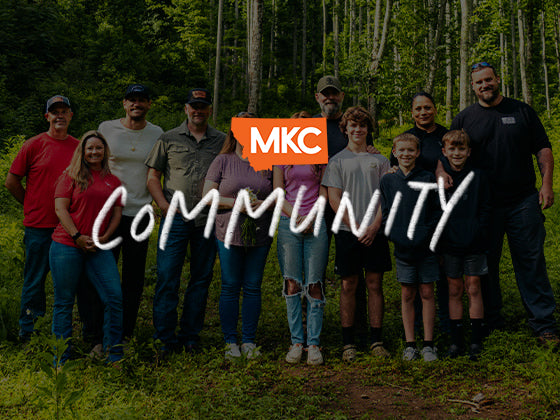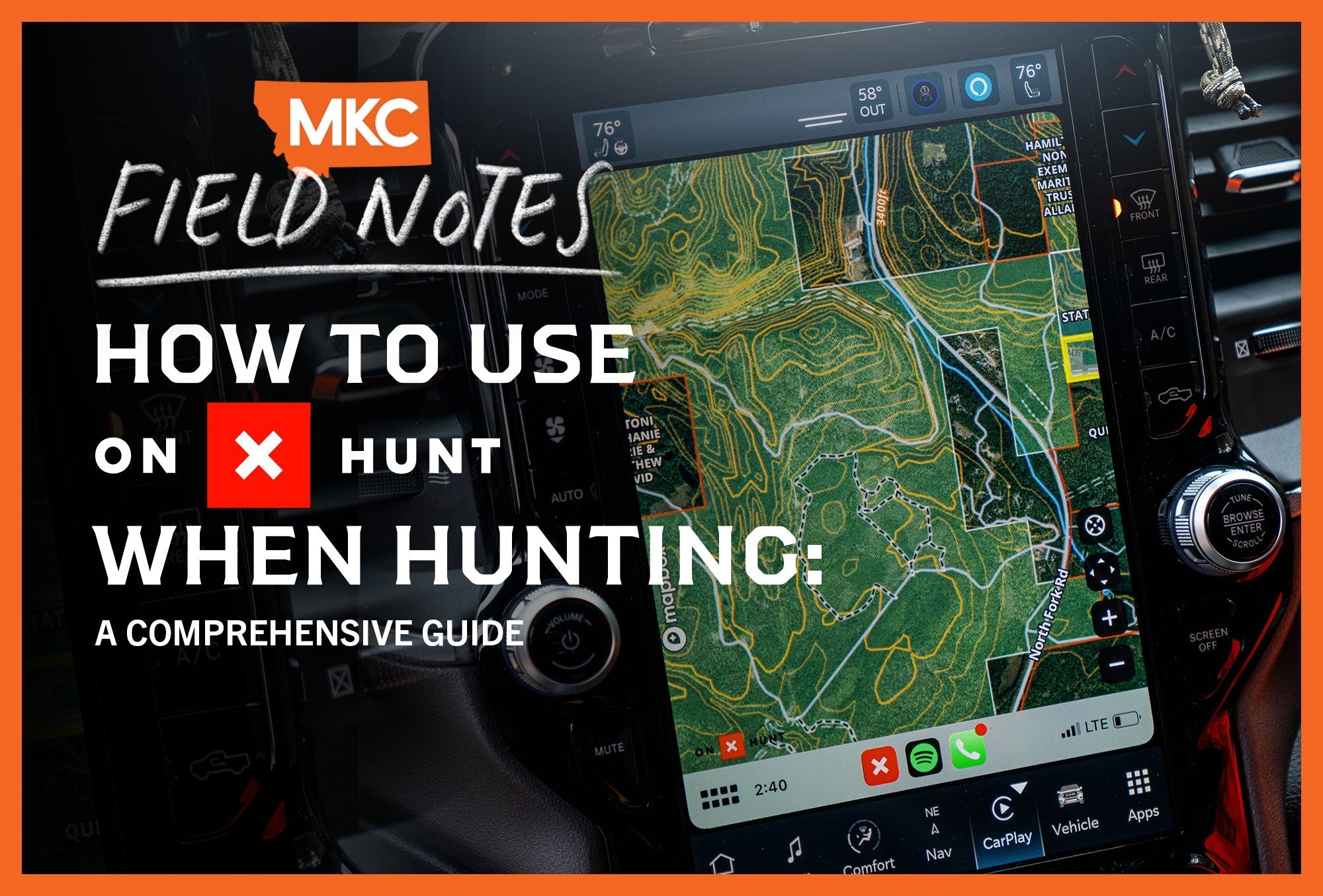Bow season calls for versatile knives. When you’re out in the field, you need a blade that’s durable, portable, useful, and ergonomic. Ironically, the best deer boning knife doesn’t just bone out deer — it handles everything the backwoods can throw at you.
I’ve been bow hunting for years, and I only use the best deer boning knives during bow season. In this blog post, I’ll explain what they are, what they’re for, and how they can help you, even if you’re not a bow hunter.

Best Deer Boning Knife #1: The Blackfoot
The Blackfoot is my go-to bow season knife. While it’s an all-purpose blade, it’s also the best deer boning knife I carry.
I love the Blackfoot because it can process just about any animal. It’s sturdy, especially in the handle, but lightweight enough that I often forget it’s there. It can gut, skin, and cape the animals I take down — plus, it can handle all my campsite tasks at the end of a long day.
I launched Montana Knife Company with the Blackfoot for a reason. While it may not be perfect for every job, it’s good enough for all of them. It’s the jack-of-all-trades of hunting knives.
I carry my Blackfoot on my backpack strap where it’s handy and accessible. I’ve also seen hunters carry the Blackfoot in a vinyl harness, on a belt, or inside a pack.
Best Deer Boning Knife #2: The Speedgoat
During archery season, I’m always on the move. I don’t spend all my time in a tree stand. I’m constantly calling, spotting, and stalking. The more I can keep weight down, the better. A lightweight, multi-purpose knife suited to my prey is ideal.
When I want to go ultralight, the Speedgoat is the best deer boning knife for me. Some hunters prefer it over the Blackfoot, and I don’t blame them. It’s perfect for ultralight backpackers who cover a lot of ground.
That’s not to say that the Blackfoot isn’t also a lightweight knife — it just doesn’t hit ultralight levels like the Speedgoat does.
Like the Blackfoot, the Speedgoat is versatile. It can cape, gut, and skin, and like the Blackfoot, it’s one of the best deer boning knives. I bring it on all my hunts — not just in Montana, but everywhere in the United States.
The Speedgoat’s paracord handle sets it apart. In a pinch, you can use the paracord to fix a boot lace, guy out a tent, hang meat in a tree, tie up a pack, and more. It’s saved me too many times to count.
Too often, I see ultralight knives with pathetic excuses for handles. Those knives leave you blistered and sore after just a few hours of use. Even if you remove the paracord, the naked Speedgoat is still surprisingly comfortable in the hand.
One of my favorite reviews I’ve ever received came from a Speedgoat buyer. He once used the Speedgoat to process six bucks, one right after the other, and his hands still felt great afterward. So, if you’re looking for a light, comfortable blade that can handle six deer in a row, the Speedgoat is the best deer boning knife for you.
Best Deer Boning Knife #3: The Stonewall
The third knife I use during bow season is the Stonewall, which is a skinning-style blade. It’s thicker and more durable than the Blackfoot or the Speedgoat. Thanks to its large, sturdy handle, it’s the best deer boning knife for hunters with bigger hands.
The Stonewall has more blade to do more work. As a skinning blade, it has less tip and more belly. It’s excellent for removing hides, of course, but it’s also great for other heavy-duty tasks.
Even though it’s big enough to break down large animals, the Stonewall is small enough to carry without becoming cumbersome. I carry it on my shoulder strap for quick, easy access.
It might sound weird to carry a “skinner” as a boning and hunting knife, but the Stonewall Skinner isn’t just a skinning knife — it’s an adaptable blade that embodies the versatility I need during bow season. It has a tad more belly than your typical blade, but not enough to make other tasks difficult.
On our website, I describe the Stonewall’s shape as being about “balance without sacrifice.” You really can have it all, and for those who prefer a sweeping blade edge for easier skinning, this may be the best deer boning knife.
Best Deer Boning Knife #4: The Whitetail
My list of the best deer boning knives wouldn’t be complete without the Whitetail.
The Stonewall Skinner, Blackfoot, and Speedgoat are some of Montana Knife Company’s OGs, and the Whitetail is a baby in comparison. It shouldn’t surprise you that the Whitetail is functionally similar to the knives that were our “whitetail knives” first.
Contrary to its name, though, the Whitetail isn’t just for whitetail deer. I designed it to handle whitetail and up — and that includes bighorns, elk, moose, and even bear. When my quarry aligns with the Whitetail knife’s strengths, there’s no better tool out there. It’s perfect for skinning, gutting, boning out, and even meat processing.
That said, the Whitetail shines when it’s in the hands of tree stand and deer blind hunters, and as I mentioned, I’m usually on the move during bow season. But I’ve never regretted having my Whitetail with me. It’s nice to have multiple knife options based on how I want to hunt.
What’s in the Best Deer Boning Knife?
When you select the best deer boning knife for you, ask yourself these questions:
- What animals will I encounter (besides deer, of course)?
- What size blade will I need?
- How many days will I be out in the field?
- What will I do besides hunting? (E.g., if you won’t be starting any fires, there’s no need to pack a heavy-duty knife that can chop firewood.)
The four knives in this post are all similar, and for good reason. In our endless pursuit of perfection, we’ve reached levels of refinement that are nigh-impossible to beat. Through personal experience and feedback from fellow knife owners, we’ve pinned down what makes the best deer boning knife.
The best deer boning knife is large enough to handle deboning and meat processing but small enough to skin and cape without puncturing. In my experience, the best deer boning knife also has a roughly four-inch blade (with a little wiggle room for personal preference) and enough belly to facilitate easy skinning without making other tasks difficult.
Other traits come down to preference. Those with larger hands might appreciate the Stonewall Skinner because it’s slightly bigger, while someone who’s always on the move, like me, might prefer the ultralight Speedgoat to shave down overall weight. If you dislike stainless steel knives, you might appreciate a Parkerized carbon steel option like the Blackfoot.
The materials that make up your knife may also affect your hunting experience. While I love paracord handles for weight and utility reasons, paracord is harder to wash blood out of than G10. Stainless steel blades have a little extra corrosion resistance compared to carbon steel.
With length and shape set aside, those secondary choices become the most important.
The Best Deer Boning Knife: Experience Behind the Design
When designing knives, I draw from my experience as a deer and elk hunter. Every MKC blade is purpose-built and created with certain jobs, hunts, and animal processes in mind.
Some knife makers design knives randomly and hope knife owners will find uses for them. That’s against our philosophy here at MKC. Our knives are purpose-built, but it’s up to you to choose which works best for you.
There’s no single best deer boning knife for everyone. While all the knives on this list are excellent options, everyone will have their favorite. The best way to find out which works for you is by experiencing them for yourself.
by Josh Smith, Master Bladesmith and Founder of Montana Knife Company
























